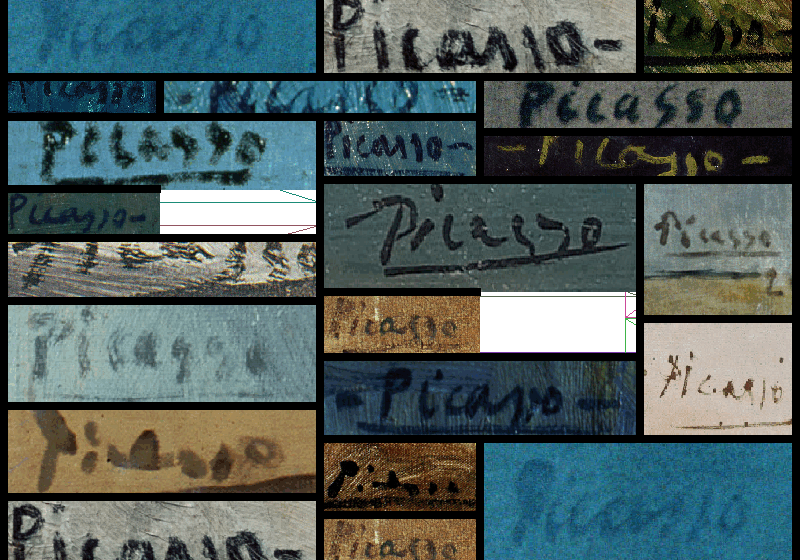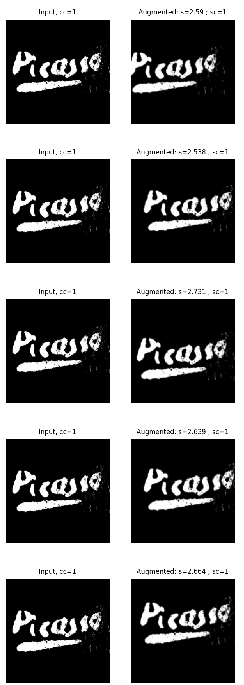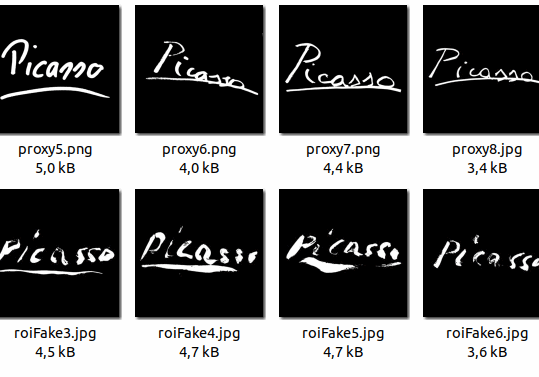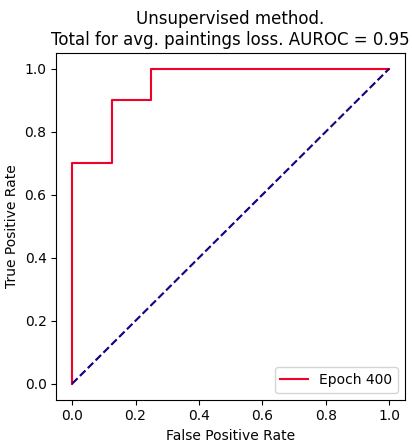[dearpdf id="1349" type="button"][/dearpdf]
[dearpdf id="1347" type="button"][/dearpdf]
[dearpdf id="1834" type="button"][/dearpdf]
[dearpdf id="1833" type="button"][/dearpdf]
[dearpdf id="1832" type="button"][/dearpdf]

Are these signatures of Picasso authentic?

THE CHALLENGE
Problem description
We are commissioned to authenticate a number of signatures painted on lithographies, which look like Picasso. For this work, we firstly created a dataset comprised of 100 photos of authentic signatures of Picasso, verified by an art experts. Secondly, we painted a few fake signatures, to validate the result.

GETTING READY
Preparing the datasets
We converted the photos of signatures into squared B/W images, to use as input for our neural network, which works with sub-images of 256×256 pixels. 70% of the authentic signatures were separated for training, 10% for validation, and the remaining 20% were reserved for testing. We placed in a different folder the unknown signatures the customer provided us with.


TRAINING OUR NEURAL NETWORK
Our neural networks are trained on the images of authentic signatures
The number of available authentic signatures is finite, so we perform data augmentation: This means randomly translating and rotating the shape of the signature in the squared images. This improves the accuracy of the classification. Additionally, it is also zoomed in and out a bit.
On the left hand side of this text, you can see on the second column, the signature after augmentation.
- We trained our model using only the authentic samples. For this task, we used two networks, an encoder and a decoder, which is able to reconstruct the signatures. After obtaining training convergence, we saved the trained model.
OUR VERDICT
Using our trained model to test the signatures
During testing we compute a probability of the signatures to be authentic.
- Technically, this is the similarity of the feature maps obtained with each test signature compared to the ones extracted during training with the authentic ones.
For testing, we used 15 fake and 15 authentic signatures, which were not seen by the model during training. As a result, of these, 95% of the signatures have been correctly classified.
- The image shows the ROC curve. The higher the area under red line (AUROC), the higher the accuracy of the classifier. 0.95 means that it takes 95% of its area.

Hi, this is a comment.
To get started with moderating, editing, and deleting comments, please visit the Comments screen in the dashboard.
Commenter avatars come from Gravatar.